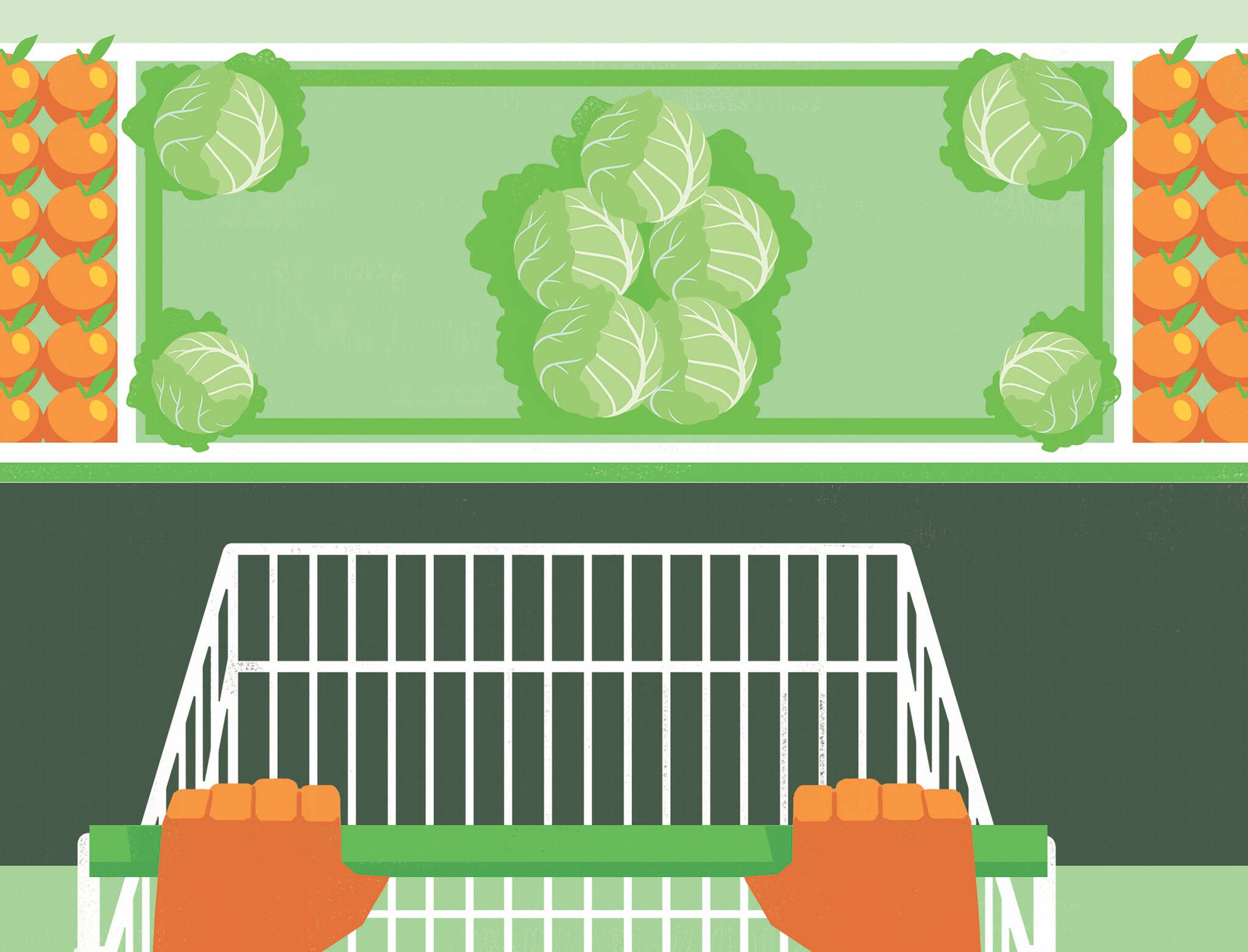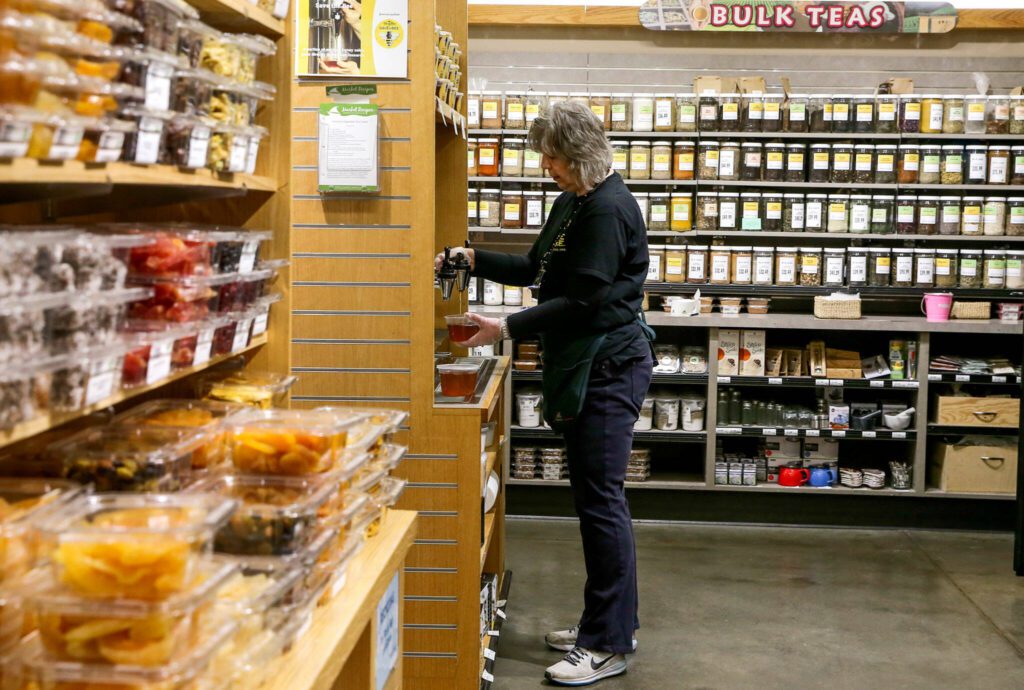By Krysten Chambrot / © 2024 The New York Times Company
Shrinking products, rising prices at the market and beyond: Shoppers have been feeling the pinch at the register for some time now. And whether it’s a new feeling or a long-lasting one, creating a grocery budget can help you feel more in control over your finances.
Budgeting “takes away the anxiety of worrying about money,” said Dasha Kennedy, known as the Broke Black Girl, a financial education platform. “Even if the income may not be where I want it to be, if there’s ever a situation, at least I know what is going on, and I know what I can do next.”
And while it may not be the most glamorous point of discussion, building a budget you can stick to can be a way of achieving your goals and putting money toward other needs.
“If there are some things you want to do, having a budget will help you know how you can make that happen,” Kennedy said.
Getting started can be daunting if you’ve never done it before, but it can be done, even if you’re not the most disciplined of savers. Below are a few tips and techniques from experts on how to set yourself up for success.
Get a Sense of Your Spending
Beth Moncel of the blog Budget Bytes calls evaluating your spending “the most important step” when you’re starting to budget.
“You need to know how much you’re spending to begin with before you even start reining it in,” she said, adding that even tracking a single week’s worth of grocery expenses can be helpful.
When she first started, she used budgeting software to help her generate spreadsheets and reports. What she used no longer exists, but apps like YNAB (formerly You Need a Budget), PocketGuard and Monarch do and will let you import all your financial accounts into a centralized hub. Or, if you prefer to keep it low-tech, gathering receipts and simply adding up expenses never hurts.
Seeing how small changes can make a big difference, Moncel said, “will really motivate you to keep going and make even bigger changes.”
Set Your Spending Amount
There’s no hard-and-fast rule for how much you should be spending on food; it can vary because of a number of factors: household size, income, location, taste, grocery store access. The most important thing is that you find something that works for you.
One standard is the 50-30-20 style of budgeting, a formula popularized in the 2006 book “All Your Worth: The Ultimate Lifetime Money Plan,” written by Sen. Elizabeth Warren, D-Mass., and her daughter, Amelia Warren Tyagi. Here’s how it works: 50% of your take-home pay should go toward basic necessities, 30% toward wants and 20% toward savings and paying off loans.
Of course, nearly two decades is a long time, and some financial advisers say the current reality may be closer to 60-30-10, particularly in more expensive parts of the country. Either way, and maybe especially as you begin, add up all your monthly needs (housing, critical utilities and transportation), then multiply your take-home pay by .5 (or .6, depending on which standard you follow). That number is ideally how much you should be spending on basic necessities. If your spending reality is more than that, it’s time to take stock.
Kennedy has another approach that may be simpler for many families: calculating how much you spend on food each week. After realizing that her family of three wasn’t eating all the food they were buying, she looked at how much their daily meals were costing, on average per day, and multiplied that number by 7 to calculate her weekly budget. With that in hand, she could strategize how she approached her shopping.
Start With Small Changes
Be realistic when it comes to all things budgeting. Setting a budget that’s too low can be discouraging and even keep you from sticking with it, Kennedy said. And suddenly making a change that doesn’t keep your lifestyle and organizational personality in mind can be another pitfall altogether.
Consider your preferences. Do you love spreadsheets and organizing? You may be the kind of person who thrives with strict, detail-oriented budgeting. Would you rather think a little less about your day-to-day spending? You might be more of a habits-based budgeter.
Rather than track all her expenses, Maria Melchor, the founder of FirstGenLiving, which helps first-generation professionals navigate their finances, keeps her spending in check by going to grocery stores she knows skew cheaper and building her shopping and eating habits around more affordable ingredients, like pantry staples and frozen vegetables.
If she feels herself spending more one week, she’ll tally that week’s bills, then multiply it by 52 to see if she thinks of this as a spending pattern that she can sustain in the long term. “I personally don’t love tracking individual expenses,” she said. “This works for me when I want to recalibrate.”
Part of being realistic also includes starting small: Doing everything at once is “kind of a recipe for disaster because it’s a really drastic change in your lifestyle,” Moncel said. For instance, if you’re someone who doesn’t cook at all, you’re not going to become Betty Crocker overnight. Start by making one meal a week at home, and, eventually, you can work up to two or three.
It also helps to think of budgeting as a practice, one that develops over time and changes with you. When she first started, Moncel tracked her expenses obsessively, and now she’s more hands off. Her habits now reflect her budget: She no longer snacks and makes most of her meals at home. But that didn’t happen overnight. It takes time — but maybe not as long as you’d think.
“Before you know it, your habits have changed, your preferences have changed, as far as what you like to eat, and you’ll probably see a massive change in your food budget as well,” she said.
Take Stock of Your Pantry
Kennedy keeps a running spreadsheet of everything in her refrigerator and pantry, including quantity and expiration date that she updates any time she cooks or goes grocery shopping. It helps curb food waste and keeps her from overbuying, so she can put her dollars toward other ingredients.
And, if you’re splitting the grocery shopping responsibilities with someone else, she suggests sharing lists — shopping or inventory — so that you can both stay on task.
Knowing what’s in your pantry can also keep costs down by curbing the temptation for ordering out. Melchor stocks her pantry and freezer with ingredients for a few meals she can whip together in minutes. It helps curb any urge she may have to order delivery when she’s exhausted.
Stick to a Shopping List
Once you have a sense of what’s in your pantry, you can choose a few meals and use them to build out your shopping list. You don’t have to be a strict meal planner unless you really want to, but having even a sense of a few recipes you’ll want to make in a certain week can be critical. Gravitate toward dishes that are both affordable and wonderful as leftovers — if you’re a leftovers lover, that is.
A vegetarian chili full of beans, a rich coconut-chicken curry and highly freezable stuffed shells are all good options. Whatever recipes you choose, just make sure you like them. Simply put: If you don’t like the food you’re making, you’re not going to eat it.
When she started assessing her spending, Kennedy said she realized her family was spending money on foods they hoped they would try — only to find out they weren’t eating them. It was like throwing money away.
Making a list of foods and ingredients you know you love helps you stay focused, and staying focused at the grocery store can help you save lots of money.
Be Kind to Yourself
You probably won’t become a budgeting fiend overnight. You’ll make mistakes, go over budget, come back from the store to realize you already have two jars of garlic powder. It’s all part of the process.
“When I first started budgeting, it didn’t result in some magic wand fixing everything,” Kennedy said, “but it gave me an idea of what was going on and that was what I needed to grab ahold of my finances.”
And that may be all it takes to get you started.
This article originally appeared in The New York Times
Talk to us
> Give us your news tips.
> Send us a letter to the editor.
> More Herald contact information.



























